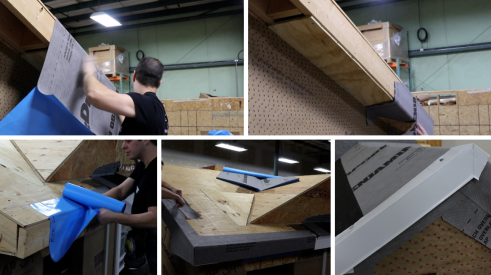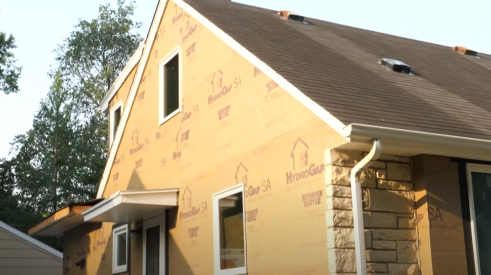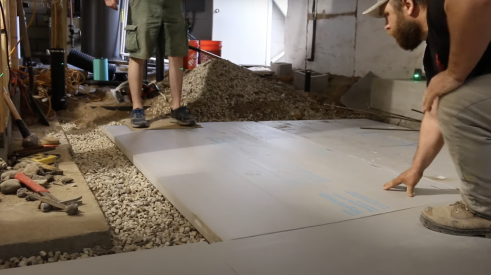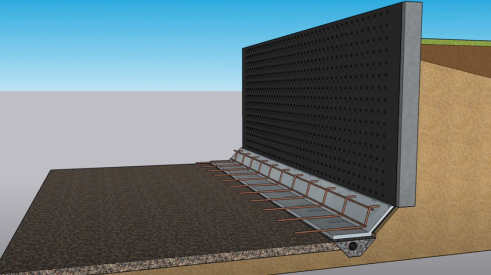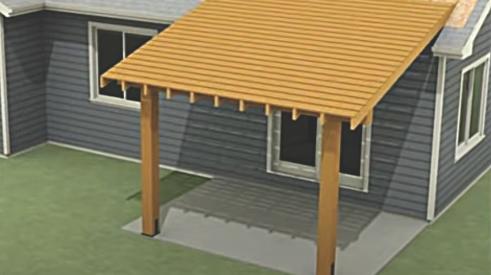The one-year warranty is pretty standard in the remodeling and building market, and while many companies look forward to the end of that one year, extending your warranty can be an effective way to drive more business.
Several years ago, Blackdog, a design/build firm in Salem, N.H., pushed their warranty from one to three years. Although the company formally had only a one-year warranty, in many cases Blackdog would go back and fix problems well past that period, says company president Dave Bryan.
“We weren’t capitalizing on that, we weren’t taking advantage of that, and we thought there would be a lot of power to be able to tell a client that our warranty is 3x our competitors’,” he says.
As the first company in its market to offer a three-year warranty (although some competitors have now matched it), Blackdog saw an immediate benefit both in signing new clients and driving additional business from existing clients.
It has also been helpful for full-service remodeler Synergy Builders, located in West Chicago, Ill. The company provides its clients with a full three-year warranty and a 10-year structural warranty.
“It’s great for repeats and referrals because they know we’ll come out whenever they call,” says co-owner Steve Taylor.
The Synergy team promotes the warranty during the sales process and also emphasizes that they’ll not only repair any problems associated with work the company has done, but will take a look at any other trouble spots in the house as well.
“When we’re selling we let them know that, and tell them we’re happy to come out and look at any issues they have, in warranty or out of warranty,” Taylor says. “We look at it as a chance to get in their house, maybe repair what they’re asking for or suggest more work.”
More than ever, clients today are concerned about companies standing behind their work and a longer warranty can make them feel more comfortable.
“People are being careful about how they spend their money,” Bryan says. “Very often people are surprised when we step up and do the right thing. People will tell stories about us, the fact that they had a great customer experience.”
While providing longer warranties offer benefits in driving more sales, it does increase the cost of doing business.
“You need to be aware that there are probably going to be costs associated with that,” Taylor says.
Companies also need to make sure they have a system in place to handle the extra work, Bryan says. Otherwise, the benefit of any extra jobs will be outweighed by the additional problems caused by dropping the ball on customer service.
“It would be more damaging to implement a longer warranty and underperform than to not implement it,” he says.
Originally, Blackdog’s lead carpenters were making the warranty repairs, as they had been before the company extended its warranty.
“We did that because we felt like there was already a connection with the client and if the lead carpenter had to go back to do warranty work on work they had done, they’d learn something in the process,” Bryan says.
The problem with that system was that the lead carpenters, who were busy working on other projects, had to either delay making repairs or pull themselves off of other jobs in the middle. That led to less-than-acceptable response times on warranty work.
To address that, and meet demand for handyman-type work, Blackdog created its Home Services division. That staff member splits his time between handyman work and warranty services.
“My goal is that I’d like that position to be cost-neutral, generate enough revenue that our warranty work doesn’t cost us anything,” Bryan says. “We’re not there yet, but our response time is great.”
Bryan also cautions that remodelers should offer a detailed explanation of what is and isn’t covered by the warranty. For example, Blackdog explains that minor cracking of a concrete slab is normal and expected. The Blackdog team covers that and other “non-warrantable conditions” before the client signs the contract.
“We document the standards and clarify them with the clients up front, tell them what’s going to happen,” Bryan says. “That helps keep us from being sucked into things that are unreasonable and doing things we shouldn’t have to do. If you don’t do that, and you just let the client drive the bus, you’re subject to owning the world.”
Offering longer warranties can help increase business, but be ready to pay for the extra repairs
Add new comment
Related Stories
How to Weatherize Roof-Wall Intersections
Mitigating moisture between changes of materials and panes requires special attention
3 Steps for Installing House Wrap and a Rainscreen
ProTradeCraft's Building Resilience walks you through how to install a self-adhered house wrap, liquid flash obstructions, and top it off with a rainscreen
How to Insulate a Heated, Structural Slab with XPS
ProTradeCraft's Building Resilience season three starts with making a basement more comfortable
How to Retrofit Foundation Footings
To make a low-height basement a more comfortable living space, this remodeler digs deeper but needs to add support to do so
Crawl Spaces to Basements: Proceed with Caution
Converting a crawl space to other uses can upgrade a home and add significant value, but when done incorrectly, it can also be disastrous
Webinar: Project and Trade Management Musts—The New American Remodel 2023
Access the webinar here to learn project and trade management lessons from The New American Remodel 2023
How to Attach a Patio Roof to an Existing House
Discover expert tips on how to attach a patio roof to an existing house. Elevate your homeowner clients' outdoor living spaces with our comprehensive guide.
How To Improve Energy Performance in Existing Attics
There’s more to insulating the attic than attic insulation; there’s venting, air sealing, and misery
Model ReModel 2022: A Case Study in Sustainable, Thoughtful Construction
The eighth annual Model ReModel project features an accessory dwelling unit, designed for aging in place, attached to a 19th-century Victorian



